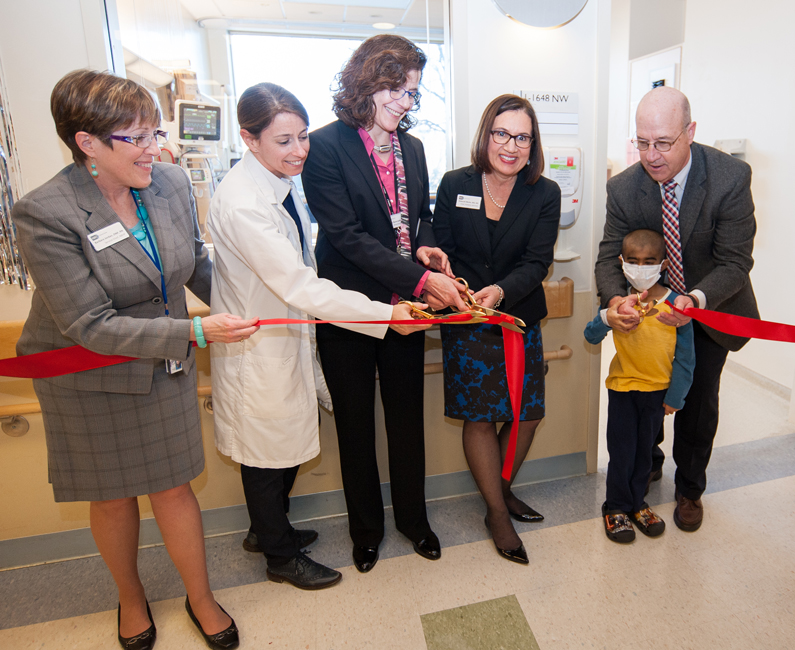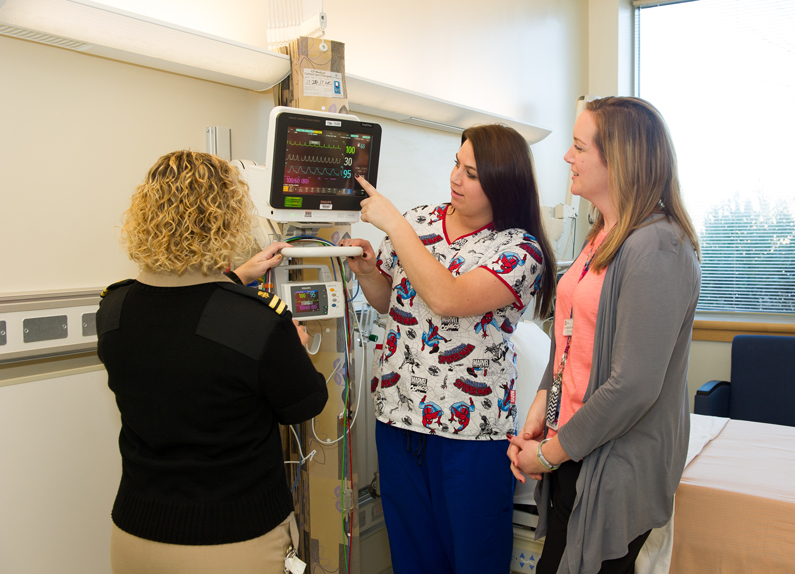
The NIH Clinical Center leadership, staff and patients gathered to celebrate the opening of the new special pediatric observation unit in late November.
The Pediatric Observation Unit is located in 1 NW and will provide additional support for patient safety in pediatric research, said the unit's inaugural chief, Dr. Zena Quezado. Quezado is a seasoned professional in pediatric anesthesia who spent the past seven years at the Children's National Medical Center in Washington, D.C. She is a familiar face in the Clinical Center, serving as a fellow in the Critical Care Medicine Department and later as the chief of anesthesiology.
The unit has monitored beds that will allow for enhanced cardiopulmonary, neurologic and metabolic monitoring of pediatric patients who are in need of closer clinical observation. It is a pediatric research facility that is able to accommodate younger and sicker children, enhancing the hospital's medical and nursing staff's ability to care for more fragile pediatric patients.

Dr. Deborah Merke, a senior investigator and chief of the Pediatric Service, said, "This new initiative is the culmination of many years of hard work by many people and represents support and recognition that intervening early in life and including children in the groundbreaking research that occurs at the NIH Clinical Center is essential as we strive to enhance health, reduce illness and reduce disability."
The Clinical Center has a notable history for advancing pediatric medicine including discovering the causes of and developing the first treatments for childhood leukemia, developing early treatments for pediatric HIV and the first pediatric gene therapy for children with an inherited disorder that damages their immune system.
About 30-40% of the clinical research protocols enroll children and about 13% of patient care activities are for children and adolescents.
"As we expand our resources in pediatrics, we optimize the safety of our current patients and also open the doors to new and exciting possibilities," Merke added.

